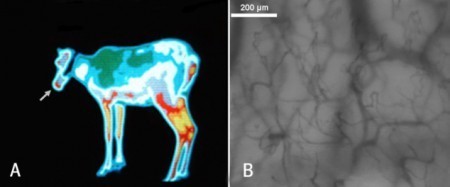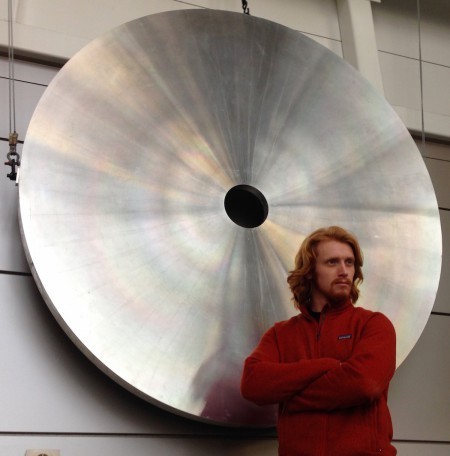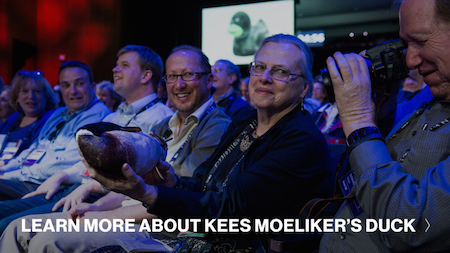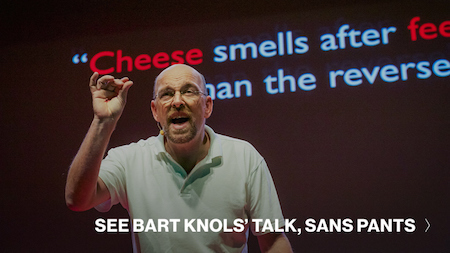Marc Abrahams's Blog, page 355
December 24, 2014
Squirting, Reviewed by Peering Physicians
Six French doctors took a squinting look at whether and how seven women squirt. The doctors published this study explaining, to some extent, what they did and why they did it:
“Nature and Origin of ‘Squirting’ in Female Sexuality,” Samuel Salama, Florence Boitrelle, Amélie Gauquelin, Lydia Malagrida, Nicolas Thiounn, and Pierre Desvaux, Journal of Sexual Medicine, epub December 24, 2014. (Thanks to investigator Ivan Oransky for bringing this to our attention.) The authors, at several institutions in France, write:
“METHODS: Seven women, without gynecologic abnormalities and who reported recurrent and massive fluid emission during sexual stimulation, underwent provoked sexual arousal. Pelvic ultrasound scans were performed after voluntary urination (US1), and during sexual stimulation just before (US2) and after (US3) squirting. Urea, creatinine, uric acid, and prostatic-specific antigen (PSA) concentrations were assessed in urinary samples before sexual stimulation (BSU) and after squirting (ASU), and squirting sample itself (S).
“CONCLUSIONS: The present data based on ultrasonographic bladder monitoring and biochemical analyses indicate that squirting is essentially the involuntary emission of urine during sexual activity, although a marginal contribution of prostatic secretions to the emitted fluid often exists.”
Here’s further detail from the study:
UPDATE (also December 24, 2014): An earlier, related study, with a self-explanatory title:
“Endogenous female prostate-specific antigen from female ejaculate may confound the use of prostate-specific antigen as a biomarker of exposure to semen,” Gwinyai Masukume, Contraception, vol. 89, no. 1, 2014, pp. 68-69.
BONUS (possibly unrelated): A video of how to make a “high power super soaker”:
Brainwaves and Fractal Aspects of Jackson Pollocks
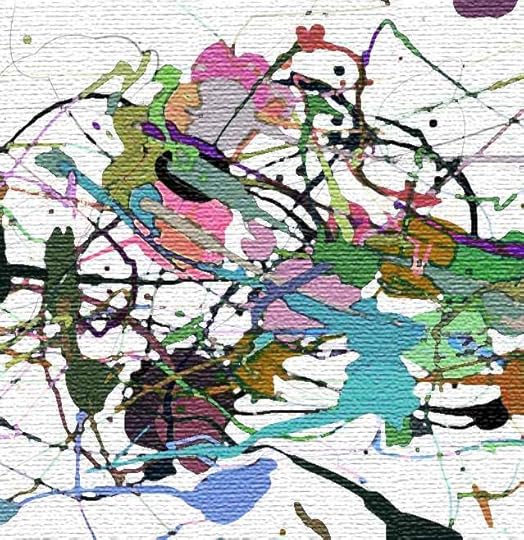 If you look at a Jackson Pollock artwork, are you attracted to it, or repulsed by it – or perhaps you’re not bothered one way or the other? Whatever the answer, it can be said with reasonable confidence that something happens in your brain when you look at it. From a neuroaesthetical point of view then, what might explain the lasting appeal of his works (to Pollock-philes)? A team of investigators from the US, Australia,and Sweden have spent more than 10 years investigating why some people are attracted to the trails of housepaint dribbled and strewn across large expanses of yachting canvas. They ask if the answer may lie in fractals.
If you look at a Jackson Pollock artwork, are you attracted to it, or repulsed by it – or perhaps you’re not bothered one way or the other? Whatever the answer, it can be said with reasonable confidence that something happens in your brain when you look at it. From a neuroaesthetical point of view then, what might explain the lasting appeal of his works (to Pollock-philes)? A team of investigators from the US, Australia,and Sweden have spent more than 10 years investigating why some people are attracted to the trails of housepaint dribbled and strewn across large expanses of yachting canvas. They ask if the answer may lie in fractals.
“Are the visual characteristics of fractals responsible for the long-term appeal of Pollock’s work?”
The team developed a chaotic pendulum-based paint dribbler called ‘The Pollockizer’ to generate fractal and non-fractal poured paintings. The quantitative ElectroencEphaloGraphic brain activity (qEEG) of experimental subjects who viewed the highly fractal (and less fractal) paintings was continuously monitored and recorded using a digital qEEG recorder.
“The results […] indicate that fractal images quantified by D = 1.3 induce the largest changes in subjects’ qEEG response (Hagerhall et al., 2008). This supports the proposal emerging from perception studies that these patterns are visually unique. These fractals generated the maximal alpha response in the frontal region, consistent with the hypothesis that they are most relaxing. They, at the same time, generated the highest beta response in the parietal region, indicating that this pattern was conversely generating most activation in the processing of the pattern’s spatial properties. This points to a very interesting interplay between these brain areas for mid-D fractals, which requires further investigation.”
See: ‘Perceptual and physiological responses to Jackson Pollock’s fractals‘ Front. Hum. Neurosci., 22 June 2011
Also see:
Famous drips
Pollock fish
Fractal bananas
Fractal cabbage
Note: The non-authentic illustrative artwork above was improbably generated with the assistance of Miltos Manetas’s online Pollock Generator,
BONUS: “The Cutting-Edge Physics of Jackson Pollock“, by Lisa Grossman, in Wired.
December 23, 2014
Twin peeks into Rudolph’s red nose (and hindquarters)
Two studies, both published in December 2012, dig into the nature of Rudolph’s red nose. Each study found a scientific surprise in the microcirculation of the reindeer’s nasal mucosa.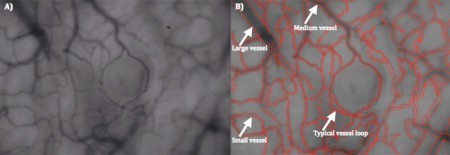
One paper is: “Microcirculatory investigations of nasal mucosa in reindeer Rangifer tarandus (Mammalia, Artiodactyla, Cervidae): Rudolph’s nose was overheated,” Ben van der Hoven, Eva Klijn, Michel van Genderen, Willem Schaftenaar, Lisette L. de Vogel, Ditty van Duijn and Erwin J.O. Kompanje, Deinsea, December 19, 2012, pp. 37-46.
The authors, at several institutions in Rotterdam, The Netherlands, report:
The classic Christmas tale and song ‘Rudolph the red-nosed reindeer’ evoked several theories about the cause of the remarkable colour of the animal’s nose, ranging from (1) a common cold, (2) alcoholic intoxication, to (3) a parasitic infection of the nostrils. Still, there is no conclusive scientific evidence of the nature of Rudolph’s red nose. We found a clue in earlier studies that showed reindeer are able to restrict respiratory heat loss by the use of nasal heat exchange. […] We found hairpin shaped ‘radiator-like’ (looping) small blood vessels in the nasal mucosa, which are most likely responsible for the warming and/or cooling of the inhaled freezing arctic air during nasal panting. […] The exceptional physical burden of flying with a sleigh with Santa Claus as a heavy load could have caused cerebral and bodily hyperthermia, resulting in an overworked nasal cooling mechanism that resembles an overheated cooling radiator in a car: Rudolph suffered from hyperemia of the nasal mucosa (a red nose) under more extreme heat loads during flight with a sleigh.
The other paper is: “Why Rudolph’s nose is red: observational study,” Can Ince, Anne-Marije van Kuijen, Dan M J Milstein, Koray Yürük, Lars P Folkow, Wytske J Fokkens, Arnoldus S Blix, BMJ, December 17, 2012;345:e8311.
The authors, at several institutions in Rotterdam and Amsterdam, The Netherlands, and Tromsø, Norway, report:
Similarities between human and reindeer nasal microcirculation were uncovered. Hairpin-like capillaries in the reindeers’ nasal septal mucosa were rich in red blood cells, with a perfused vessel density of 20 (SD 0.7) mm/mm2. […] The nasal microcirculation of reindeer is richly vascularised, with a vascular density 25% higher than that in humans. These results highlight the intrinsic physiological properties of Rudolph’s legendary luminous red nose, which help to protect it from freezing during sleigh rides and to regulate the temperature of the reindeer’s brain, factors essential for flying reindeer pulling Santa Claus’s sleigh under extreme temperatures.
BONUS: Figure A (from Ince et al. 2012) also reveals that Rudolph also has a red arse. This was apparently not noticed by the authors (they did not specifically mention it in their paper).
The Pursuit of Irony
Savor, if you will, the merciless pursuit of irony, in a newly published paper, and then in gleeful commentary by people who read that paper.
The paper is:
“The Ethics of Ironic Science in Its Search for Spoof,” Maryam Ronagh, Lawrence Souder, Science and Engineering Ethics, epub December 16, 2014. The authors, at Drexel University, explain:
“We attempt to understand why so many readers cited such ironic science seriously…. Based on this study we worry that the integrity of the scientific record is as vulnerable to ironic science as it is to retracted research. Unless they are warned otherwise, readers are left to wallow in Booth’s (1974) unstable irony. Readers of scientific research will not expect a published paper to express certainty about the truth of its content, but they should expect certainty about the truthful intent of its authors.”
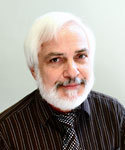 Professor Souder [pictured here], co-author of that paper, has a doctorate in an unusual specialty. His web site says: “Lawrence Souder earned his PhD in the rhetoric of science from Temple University.”
Professor Souder [pictured here], co-author of that paper, has a doctorate in an unusual specialty. His web site says: “Lawrence Souder earned his PhD in the rhetoric of science from Temple University.”
Here are three in a growing line of delighted pursuers of those pursuers: Ivan Oransky, Rose Eveleth, Neuroskeptic.
Another — a different — pursuit of irony is shaping up in New York City. Join the pursuit yourself, if you like, by reading these items, which are listed here in reverse chronological order:
[COMING EVENT] January 8, 2015 – “Found in Translation: Why Science Needs Storytelling (and Vice Versa) – an Evening with Malcolm Gladwell”
“Should we stop believing Malcolm Gladwell?“
“Malcolm Gladwell faces new charges of using others’ information without attribution“
BONUS: Alanis Morissette sings “Ironic”:
BONUSES TO THE BONUS:
“Isn’t It Ironic? Probably Not” [New York Times]
“Scott speaks with the president of the Modern Language Association, Herbert Lindenberger, about the Alanis Morisette song “Isn’t It Ironic.” Professor Lindenberger explains irony.” [NPR]
Correcting the speed of light
Greg Ross reports, on the Futility Closet blog:
“Light crosses space with the prodigious velocity of 6,000 leagues per second.”
– La Science Populaire, April 28, 1881
“A typographical error slipped into our last issue that it is important to correct: the speed of light is 76,000 leagues per hour — and not 6,000.”
– La Science Populaire, May 19, 1881
“A note correcting a first error appeared in our issue number 68, indicating that the speed of light is 76,000 leagues per hour. Our readers have corrected this new error. The speed of light is approximately 76,000 leagues per second.”
– La Science Populaire, June 16, 1881
(Thanks to investigator Jane Chu for bringing this to our attention.)
December 22, 2014
A winning “Smiling”, from the man behind “Swearing as a Response to Pain”
 The prize-winning essay about smiling, written by a professor who won an Ig Nobel Prize for his research on swearing and pain , appears in today’s issue of The Guardian. It begins:
The prize-winning essay about smiling, written by a professor who won an Ig Nobel Prize for his research on swearing and pain , appears in today’s issue of The Guardian. It begins:
How we grin to bear it – the science of smiling
The winning article of the 2014 Wellcome Trust science-writing prize looks at smile research – how they make us feel better, how to fake them and why you should say ‘cheeks’ not ‘cheese’
‘The curve that sets everything straight” was how comedian Phyllis Diller once described the smile. And it’s true that there’s something charming, trustworthy and disarming about a smile – but this can be misleading. Dig a little deeper and you will understand a much less wholesome side. Because, ladies and gentleman, the smile is one of the biggest fakes going.
I know what you’re thinking: we all pull a false smile now and again to appease our fellows and avoid unnecessary conflict. On the other hand, a genuine smile of true enjoyment is something different. Psychologists have named such a smile after the French neurologist Guillaume-Benjamin-Amand Duchenne de Boulogne. The Duchenne smile, utilising the muscles around the eyes that lift the cheeks to produce crow’s feet, has long been held as an inimitable sign of true human emotion. Or at least it was until 2013, when a team of researchers from Northeastern University, Boston, broke that hoodoo.…
The 2010 Ig Nobel Peace Prize was awarded to Richard Stephens [pictured here], John Atkins, and Andrew Kingston of Keele University, UK, for confirming the widely held belief that swearing relieves pain. [They published a paper describing their research: “Swearing as a Response to Pain,” Richard Stephens, John Atkins, and Andrew Kingston, Neuroreport, vol. 20 , no. 12, 2009, pp. 1056-60.]
Viewing Works of Art (authentic and not), an fMRI study
The field of ‘neuro-esthetics’ a.k.a. ‘neuroaesthetics’ can perhaps be loosely described as ‘the search for a neuronal interpretation of creativity’. Nowadays, neuro-estheticists (a.k.a. neuroaestheticians) have powerful scientific instruments at their disposal in the form of functional Magnetic Resonance Imaging (fMRI) machines. For an example of fMRI-based neuroaesthetic research, which is unique in the fact that it examines not only neural responses to authentic artworks, but also to those which have been flagged as fakes or copies, see: ‘Human Cortical Activity Evoked by the Assignment of Authenticity when Viewing Works of Art’ Frontiers in Human Neuroscience, 2011; 5: 134.
In the illustration below, the left hand image is REAL, but the right hand image is FAKE.
“Using functional magnetic resonance imaging, viewing of artworks assigned as ‘copy,’ rather than ‘authentic,’ evoked stronger responses in frontopolar cortex (FPC), and right precuneus, regardless of whether the portrait was actually genuine.”
“Viewing of portrait art elicited the predicted activation in lateral visual cortical areas, corresponding to regions sensitive to faces and object recognition. However, these areas were not differentially activated by the cue of authenticity. Other areas were significantly activated by the assignment of authenticity, including the right FPC, right middle temporal gyrus, right precuneus, and orbitofrontal cortex.”
Further resources: The Institute of Neuroesthetics and The Association of Neuroesthetics
BONUS: A trailer for the 1974 Orson Welles file ‘F for Fake’
December 21, 2014
Nicholas Galitzki joins Luxuriant Flowing Hair Club for Scientists (LFHCfS)
Nicholas Galitzki has joined the Luxuriant Flowing Hair Club for Scientists (LFHCfS). He says:
I am a graduate student at the University of Pennsylvania in the Department of Physics and Astronomy. Throughout my journey in sub-millimeter experimental astrophysics, my fiery locks have been behind me, propelling me from one scientific discovery to the next. They we’re there keeping me warm when we launched our telescope, BLASTPol, from the ice sheets of Antarctica and they will be there when I go again in 2016. (Here is a recent paper I co-authored: “The Next Generation BLAST Experiment“.) The picture shows my follicles in their full flamboyant glory being reflected off of our former primary mirror. To accompany my flowing hair I have grown a full beard to reflect the rugged experimental side of my work which takes me to the field with all manner of large manly tools and equipment. I look forward to my hair and me joining this most prestigious of scientific clubs.
Nicholas Galitzki, LFHCfS [Click on the image. below, to see an enlarged version.]
Graduate student, Department of Physics and Astronomy
University of Pennsylvania
Philadelphia, Pennsylvania, USA
Ig Nobel Prize winners supply two of the ten “weirdest” TED Talk moments
The TED Blog lists “The 10 weirdest things that have happened in TED Talks“. Two of those “weirdest things” involve Ig Nobel Prize winners.
Kees Moeliker was awarded the 2003 Ig Nobel Prize for biology, for documenting the first scientifically recorded case of homosexual necrophilia in the mallard duck. Here’s what TED Blog says:
3. The story of a man and his dead duck. Ornithologist Kees Moeliker won the Ig Nobel prize for inspiring future generations of scientists with a strange but serious paper about the mallard’s inclination toward homosexual necrophilia. During his talk at TED2013, Moeliker shared the odd story behind his research… and handed an audience member the stuffed dead duck that inspired it. Before leaving the stage, he politely asked for the duck back, as it is technically a museum specimen.
Bart Knols was awarded the 2006 Ig Nobel Prize for biology, for showing that the female malaria mosquito Anopheles gambiae is attracted equally to the smell of limburger cheese and to the smell of human feet.. Here’s what TED Blog says:
Bart Knols gives his talk… in his underwear. What’s more annoying than a mosquito bugging you while you’re in bed? To remind us of this, malariologist Bart Knols started his TEDx talk from a bed onstage. He emerged from under the covers to share the details of his research on the spread of malaria … aaaand he never stopped to put on pants. Also notable: watching hundreds of mosquitoes feed on his arm in a metal box on stage, at the 8:09 mark.
Tinnitus, and you guzzling coffee and bread, maybe
If you hear a ringing in your ears, and if you eat food, you may or may not be persistently or bothersomely annoyed by this study. It is yet another document that explains to people that they should or should not drink coffee:
“Association of Dietary Factors with Presence and Severity of Tinnitus in a Middle-Aged UK Population,” Abby McCormack, Mark Edmondson-Jones, Duane Mellor, Piers Dawes, Kevin J. Munro, David R. Moore, Heather Fortnum, PLoS ONE 9(12), 2014, e114711. (Thanks to investigator Falk Fish for bringing this to our attention.) The authors, based in Nottingham and Manchester, UK and in Cincinnati, Ohio, USA, report:
“Participants were asked questions specific to tinnitus (defined as noises such as ringing or buzzing in the head or ears)….
“PERSISTENT TINNITUS: Eating oily fish, or non-oily fish once a week or more, avoiding eggs, and drinking more cups of caffeinated coffee per day were associated with a lower odds ratio of reporting persistent tinnitus. Conversely greater consumption of fruit and vegetables per day, eating wholemeal/wholegrain or ‘other’ type of bread compared to white bread, and avoidance of dairy produce were associated with increased report of persistent tinnitus….
“BOTHERSOME TINNITUS: The only dietary association with reporting of bothersome persistent tinnitus was a reduction in prevalence when wholemeal/wholegrain bread was consumed rather than white or brown bread.”
Marc Abrahams's Blog
- Marc Abrahams's profile
- 14 followers



